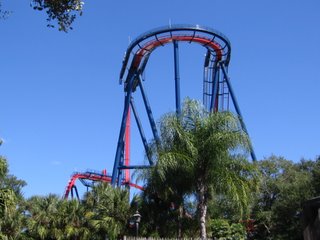I'm in
Montpelier again, for a week this time, and things are a little different. People are waiting for a major flood. Not just on alert for it - they are actually waiting for a flood to happen. The situation is very similar to the circumstances that led to the
great flood of 1992. Downtown Montpelier is situated at the convergence of the Winooski River and its tributary, the North Branch. The problem is that the Winooski is frozen solid East (upstream) of the North Branch. The current concern is that, given the proper circumstances (warm temperatures and rain), the upstream ice will break up and lodge at the river bend just downstream of the North Branch. A pileup of ice will effectively block the North Branch from properly draining into the Winooski and, voila, back it up into the streets and basements of Montpelier.
This map shows the flood zone from 1992. It's actually a pretty small geographical area. However, it does encompass basically the entire Montpelier business district. Importantly, it includes both my workplace and my hotel. I am lucky enough to be on the third floor of both buildings, but my rental car would be lost in a major flood.
The residents of the city are on
alert, but they are keeping a good sense of humor about the whole thing. Businesses have decorated their storefronts with sandbags and plywood in a sort of community-art project. The
Capitol Grounds Coffee Shop has gone a step further by lining its exterior walls with coffee sacks filled with sand. Many a storefront features pre-flood or Noah's Ark sale signs. I have several cool pictures that I would like to post, but alas, the interface between camera and computer is back in Maine.
Life goes on as well. This is a big week for Montpelier, as the annual
Green Mountain Film Festival is in progress. This ten-day festival features 38 films, both new and old, drama and documentary, but primarily independant. The thread is good filmmaking and a good story. Many films are followed by discussions led by filmmakers, critics, historians and social groups. It's an impressive lineup, one worthy of keeping an eye on in future years as well.
While I hope to get to a film or two before I get flooded out, I have yet to do so. Tonight I stopped by the
Langdon Street Cafe to listen to some music. I managed to catch the final few minutes of a student film about young musicians, and a nice five-song set by said musicians. Unfortunately, I did not catch the name of the young duo. They played mostly original music, and the themes presented in their songs reflected this limited worldview. The best song was a cover of
Van Morrison's "Brown Eyed Girl."
The main attraction for the evening was a gentleman by the name of
Blue Fox. Blue plays acoustic Delta blues on steel resonator and slide guitars. Blue has a terrific voice and is an accomplished guitarist, but he wasn't really getting it done for me tonight. I thought he was trying to overstep his bounds as a guitar player, bringing out a bag of tricks on almost every song. While technically impressive, Blue struggled to integrate his solos into the rhythm of the music, making them sound forced rather than natural. As a novice player whose next solo will be his first, I feel odd criticizing Blue Fox's performance. But as I said, his style wasn't working for me on most songs. When Blue stuck to the basics and wove the song's melody into the rhythm, his playing really shone.
I appreciate that Montpelier continues to have much to offer, despite being a very small city that practically rolls up the sidewalks at 8 p.m. I have my eye on a film festival movie for tomorrow evening, and if things work out, I hope to report back on that very soon. I also look forward to posting some pictures over the weekend. Hopefully they will be whimsical sandbag decorations, and not the "devastating flood footage" variety.
Labels: Live Music, Travel, Vermont









